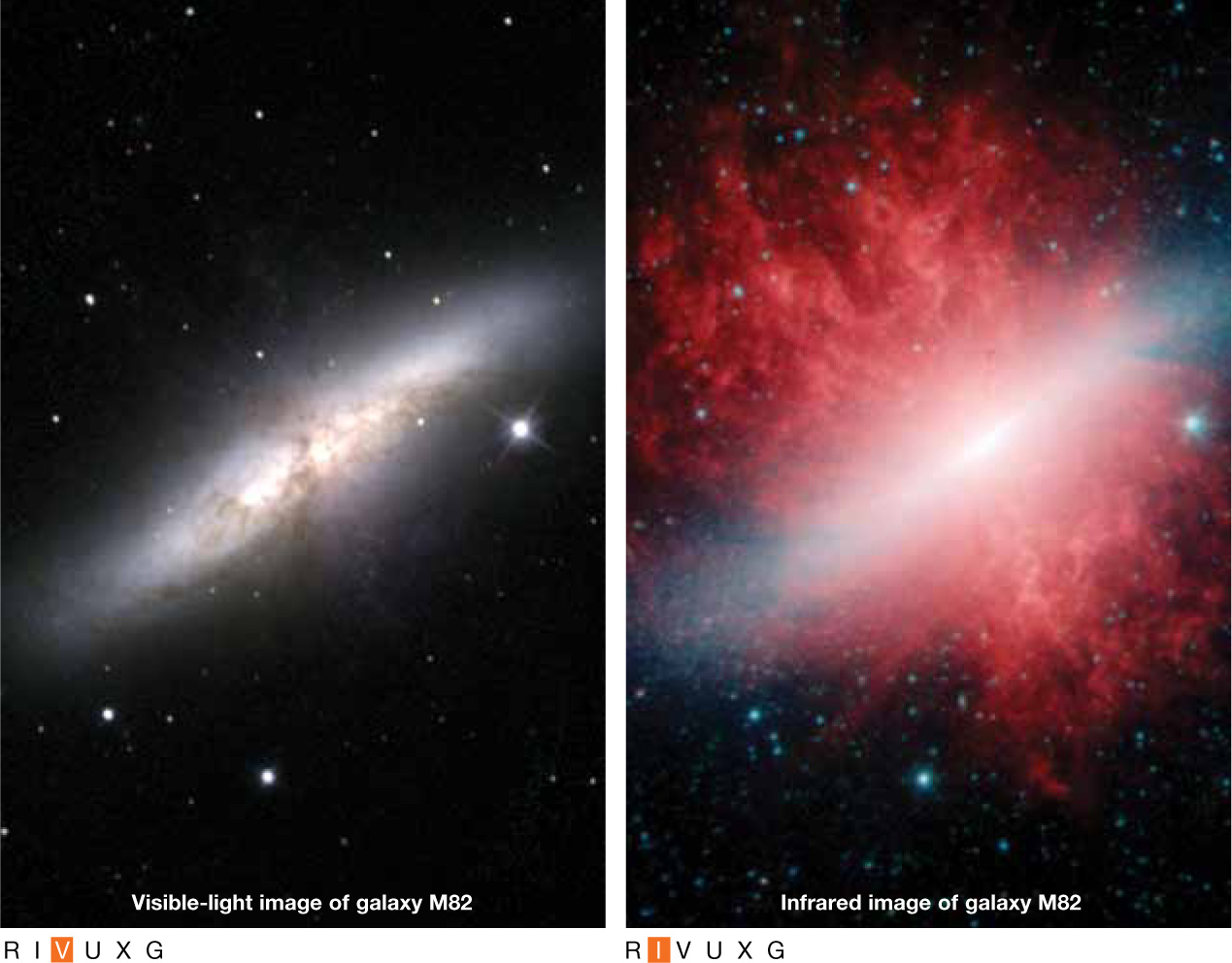CHAPTER
6

Optics and Telescopes
LEARNING GOALS
By reading the sections of this chapter, you will learn
| 6–1 | How a refracting telescope uses a lens to form an image |
| 6–2 | How a reflecting telescope uses a curved mirror to form an image |
| 6–3 | How a telescope’s size and Earth’s atmosphere limit the sharpness of a telescopic image |
| 6–4 | How electronic light detectors have revolutionized astronomy |
| 6–5 | How telescopes are used to obtain spectra of astronomical objects |
| 6–6 | The advantages of using telescopes that detect radio waves from space |
| 6–7 | The advantages of placing telescopes in Earth orbit |
There is literally more to the universe than meets the eye. As seen through a small telescope, the galaxy M82 (shown in the accompanying image) appears as a bright patch that glows with the light of its billions of stars. But when observed with a telescope sensitive to infrared light—with wavelengths longer than your eye can detect—M82 displays an immense halo that extends for tens of thousands of light-years.
The spectrum of this halo reveals it to be composed of tiny dust particles, which are ejected by newly formed stars. The halo’s tremendous size shows that new stars are forming in M82 at a far greater rate than within our own Galaxy.
These observations are just one example of the tremendous importance of telescopes to astronomy. Whether a telescope detects visible or nonvisible light, its fundamental purpose is the same—to gather more light than the unaided human eye. Telescopes are used to gather the feeble light from distant objects to make bright, sharp images. Telescopes also produce finely detailed spectra of objects in space. These spectra reveal the chemical compositions of nearby planets as well as of distant galaxies and help astronomers understand the nature and evolution of astronomical objects of all kinds.
As the accompanying images of the galaxy M82 show, telescopes for nonvisible light reveal otherwise hidden aspects of the universe. In addition to infrared telescopes, radio telescopes have mapped out the structure of our Milky Way Galaxy; ultraviolet telescopes have revealed the workings of the Sun’s outer atmosphere; and gamma-ray telescopes have detected the most powerful explosions in the universe. The telescope, in all its variations, is by far astronomers’ most useful tool for collecting data about the universe.